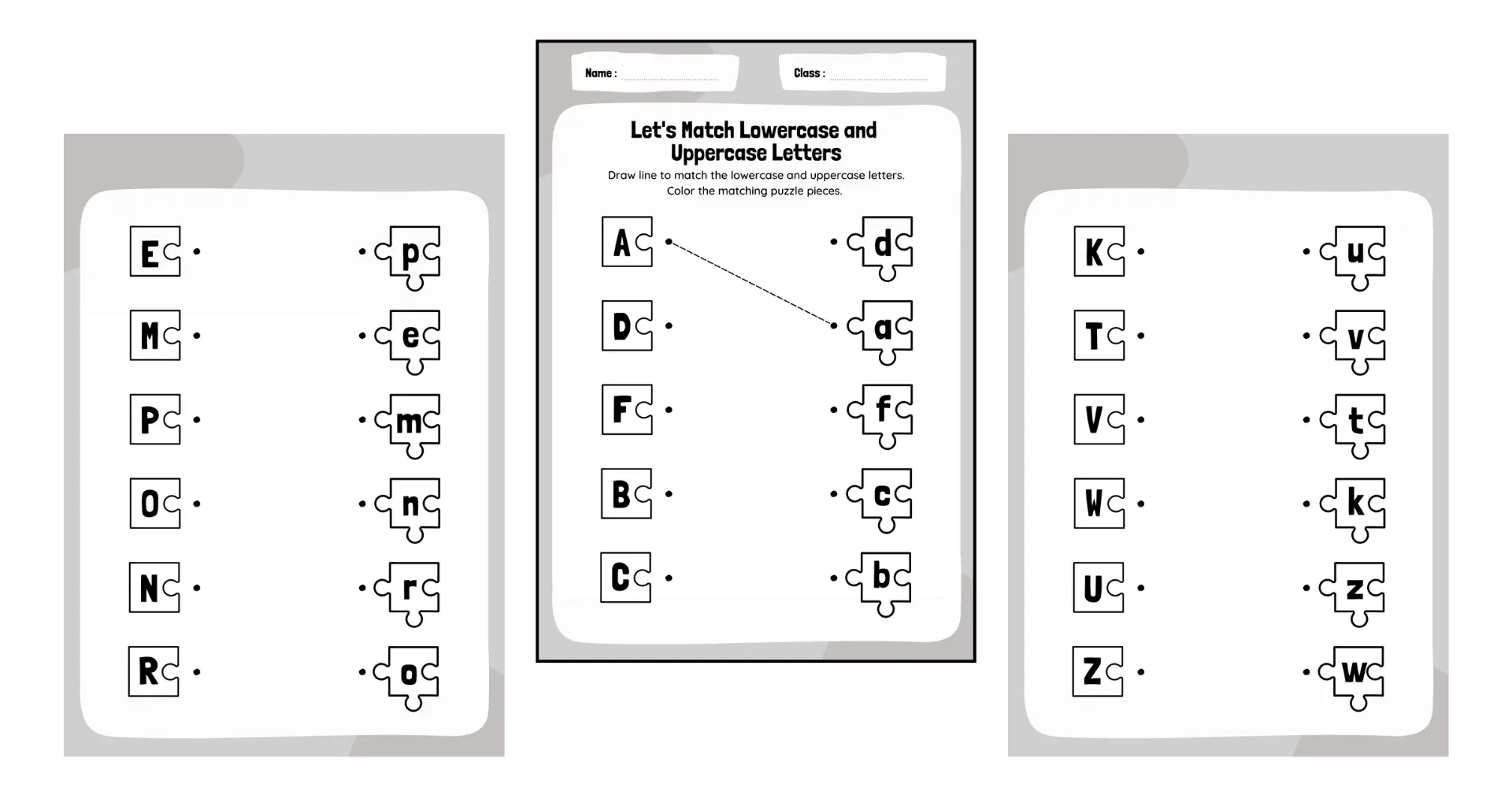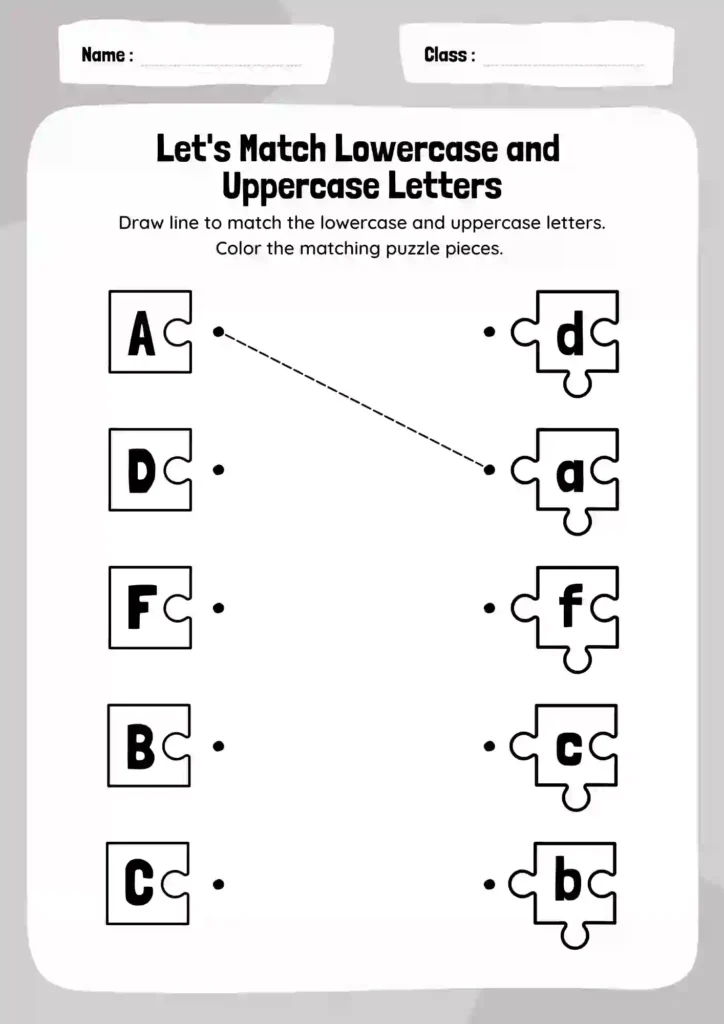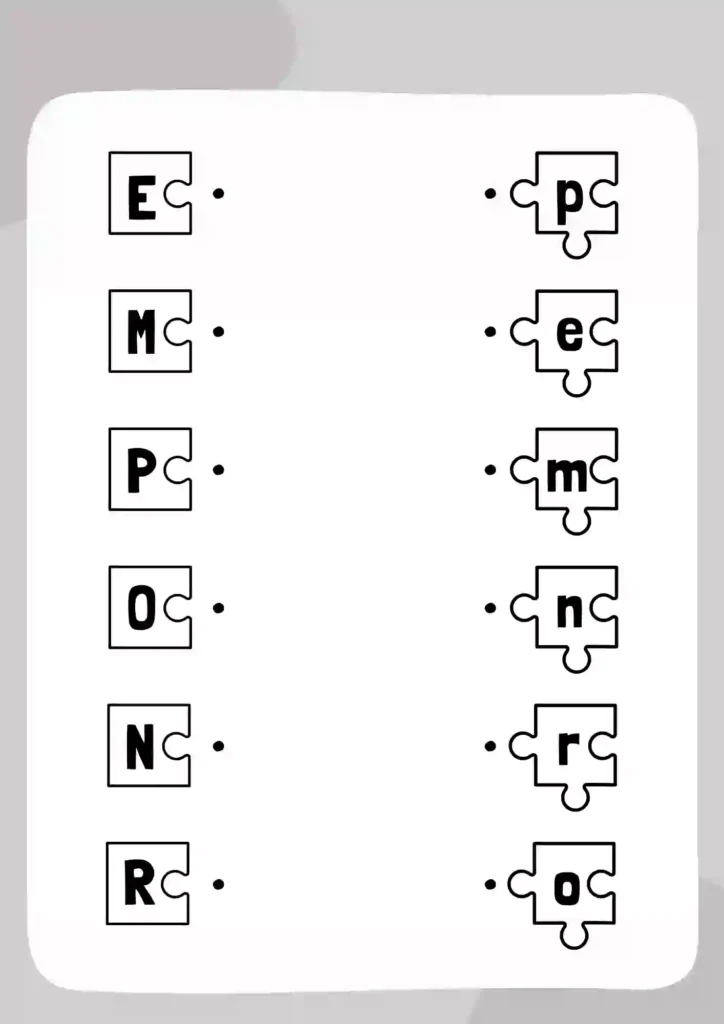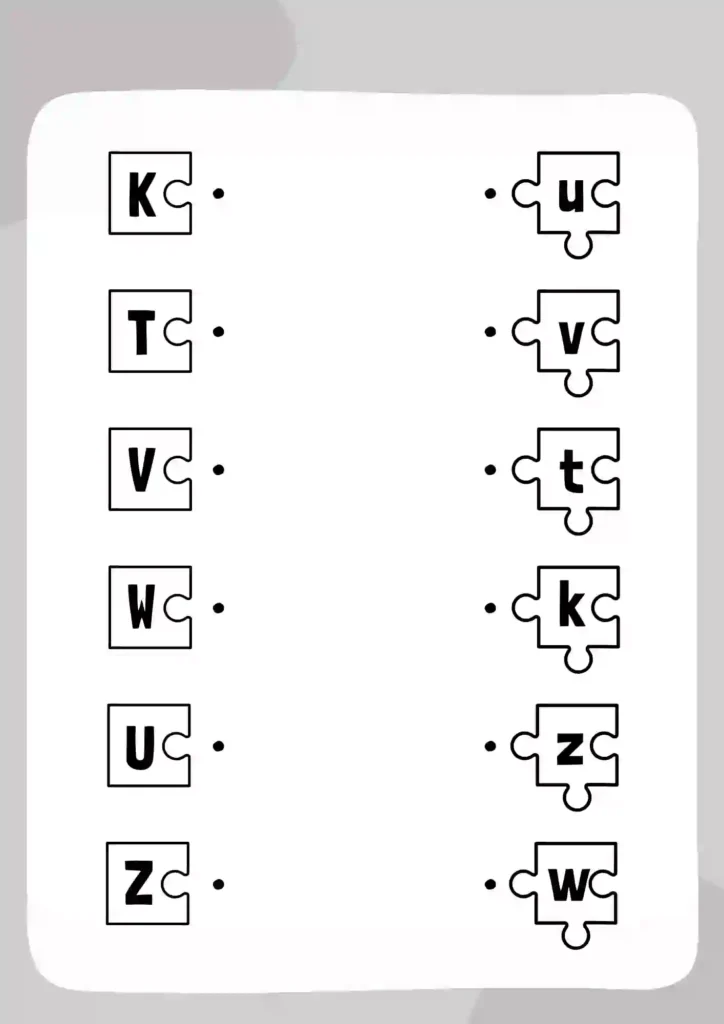Introducing young learners to the alphabet is a crucial step in their educational journey. The “Alphabet Matching Worksheet” is designed to help children recognize and match uppercase letters with their lowercase counterparts. This engaging activity not only enhances letter recognition but also promotes fine motor skills as children draw lines between the matching letters. This article provides three free worksheets available in PDF format, making it easy for parents and educators to download and print for classroom or home use.
Alphabet Matching Worksheet Nursery Details:
| Feature | Details |
|---|---|
| Format | Downloadable PDF |
| Number of Pages | 3 |
| Content | Uppercase and lowercase Letter-matching activities |
| Illustrations | Yes, playful and age-appropriate, colorful, eye-catching designs to capture children’s attention |
| Suitable For | Nursery, Lkg & Ukg |
| Printable? | Yes |
Check Other Alphabet Matching Worksheets.
Learning Goals
- Recognizing Letters: We want to help kids get better at recognizing different letters of the alphabet. This means knowing what each letter looks like and being able to name them.
- Building Fine Motor Skills: Kids will practice tracing and drawing letters to help improve their hand movements. This will make it easier for them to write and do other activities that need careful hand control.
- Boosting Thinking Skills: By identifying and matching letters, they will strengthen their thinking abilities. This activity will help them learn how letters are related to each other and improve their memory.
Who is this for?
This worksheet is perfect for kindergarten children who are just beginning to explore the world of shapes and numbers. It’s also suitable for preschoolers who are ready for a bit more of a challenge, as well as early learners in LKG and UKG.
Materials Needed
- Printed Copy of the Alphabet Matching Worksheet
- Crayons or Colored Pencils
How to Use
- Introduce the Letters: Start by introducing both uppercase (capital) and lowercase (small) letters to the children. You can use colorful flashcards or big alphabet charts to help them get to know the letters better. Make it fun by pointing to each letter and saying its name together!
- Show How to Match: Next, demonstrate how to match the letters. Take a worksheet and draw a line between the uppercase and lowercase letters. You can say something like, “Look! This big ‘A’ matches with this small ‘a.’ Let’s connect them together!”
- Practice Together: Now, let’s work on the first worksheet as a group. Encourage the children to say the letters out loud while they match them. This will help them remember the letters better. You can ask questions like, “What letter is this?” to keep them engaged.
- Let Them Try Alone: After practicing together, give the children some time to complete the other worksheets on their own. This will help them feel more independent and build their confidence in matching letters.
- Review and Talk About It: Once everyone has finished the worksheets, gather together to review the answers. Go over each letter and discuss any that were tricky. Celebrate their successes and gently correct any mistakes. This is a great way to wrap up the activity and make sure everyone understands!
Tips
- Use Bright Crayons or Markers
Grab some colorful crayons or markers! Using bright colors can make the activity more exciting and fun for kids. They will enjoy using these colorful tools as they learn. - Encourage Speaking the Letters
When children match letters, encourage them to say the letters out loud. This helps them remember the letters better. It’s a great way to make learning more interactive and lively! - Add Songs and Rhymes
Think about using songs or rhymes that talk about the alphabet. Singing and rhyming can create a joyful learning environment. Kids love music, and it can make learning the alphabet feel like a fun game!
Additional Activities
- Alphabet Bingo: Let’s play a fun game of Alphabet Bingo! You can make bingo cards that have different letters on them. Gather your friends or family, and see who can get five letters in a row first. It’s a great way to learn the alphabet while having a good time together!
- Creative Letter Crafts: How about getting creative with some letter crafts? You can invite children to make their own art using letters. For example, they can decorate a big letter “A” by gluing on cutouts of apples. This activity not only helps them learn about letters but also lets them express their creativity in a fun way!
Download the PDF File Here:
Click To Download the Alphabet Matching Worksheet Nursery PDF
How to Print
- Get the PDF: Start by clicking the link to download the PDF files of the worksheets.
- Set up Printing: Make sure your printer is all setup. You can adjust the settings like paper size, whether it’s portrait or landscape, and how clear you want the print to be.
- Check Before You Print: Take a print preview. To make sure everything looks just right before you hit print.
- Print: Once you’re happy with how it looks, go ahead and hit that print button.
Tips for Parents and Educators
- Create a Weekly Routine: Try to set aside a specific time each week dedicated to alphabet activities. This could be a fun hour on Saturday mornings or a cozy time in the evening. Having a regular schedule helps kids know what to expect and makes learning a part of their routine.
- Celebrate Progress with Praise: Always celebrate your child’s achievements, no matter how small! Use stickers, stamps, or even just kind words to let them know they are doing a great job. Positive reinforcement encourages children and makes them excited about learning.
- Encourage Practice and Repetition: Repetition is key when it comes to learning. Encourage your child to practice matching letters frequently. You can play games, sing songs, or do fun activities that involve letters. The more they practice, the better they will get at recognizing and matching letters.
- Customize Learning Materials: Every child learns differently, so it’s important to adapt worksheets and activities to fit each child’s needs. For example, you can provide larger letters for kids who need them or use bright, different colors to make the activities more engaging. Tailoring the learning experience helps children feel more comfortable and confident.
- Work Together with Others: Don’t hesitate to reach out to other parents or teachers! Collaborating with others can lead to sharing great ideas and resources for teaching the alphabet. You might discover new games, activities, or materials that can make learning even more enjoyable for your child.
Common Mistakes and Solutions
Mistake 1: Confusing Similar-Looking Letters: Sometimes, children mix up letters that look alike, like the letters “b” and “d.” This can make reading and writing difficult for them.
Solution: Extra Practice with Visual Aids: To help them, we can give them more practice with these tricky letters. Using colorful pictures and fun hands-on activities can make learning easier and more enjoyable. For example, you might use flashcards or create games that involve sorting these letters.
Mistake 2: Rushing Through Activities: Another common issue is that some children hurry through their tasks. When they rush, they might make mistakes or miss important details.
Solution: Encourage Patience and Checking Work: It’s important to remind them to slow down and take their time. Encourage them to look over their work carefully before they move on to the next task. You can say things like, “Let’s take a moment to double-check what you’ve done!” This way, they can learn to be more thoughtful and thorough in their work.
How to Craft Your Own Alphabet Matching Worksheet
Creating your own Alphabet-matching worksheet is simple! Follow these steps:
- Choose Your Letters: Start by picking a group of letters. You can select both uppercase (like A, B, C) and lowercase letters (like a, b, c) to include in your worksheet.
- Create the Layout: Next, think about how you want your worksheet to look. You can make a grid or a list where the letters are organized neatly. This will help kids see the letters clearly.
- Write Clear Instructions: It’s important to tell the children what they need to do. You might say something like, “Draw a line to connect the big letter with the small letter that matches it.” This way, they know exactly what to do!
- Test It Out: Before sharing your worksheet with everyone, try it out with a few kids. See if they enjoy it and if it helps them learn. This will give you a chance to make any changes if needed.
By utilizing these worksheets, you can effectively support early literacy development while making learning enjoyable for young children. Download your free PDF today and start matching those letters!
Leave a Comment
We would love to hear your feedback! Share your experiences with the “Alphabet Matching Worksheet” and any tips you have for other parents and educators.
Love from LkgWorksheets!




